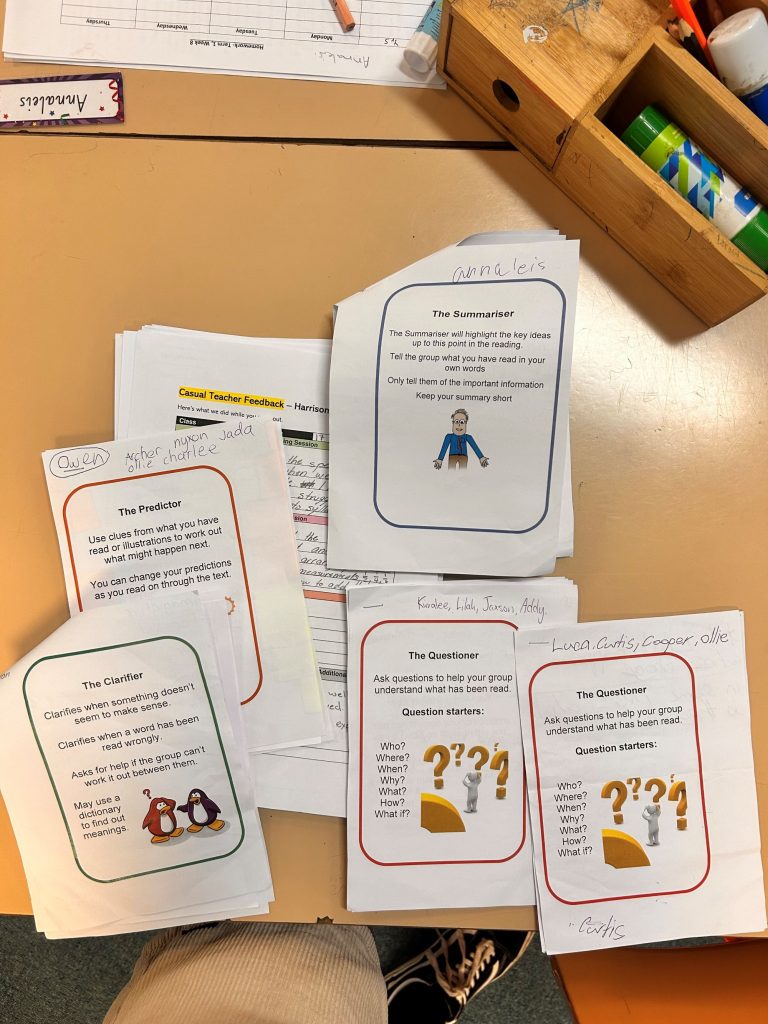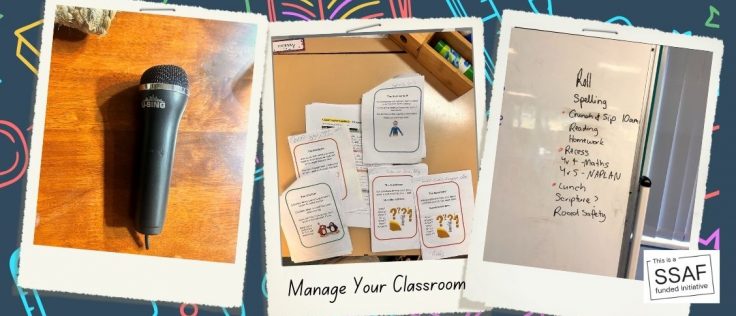Written by Harrison McGinn
Perhaps it’s your first placement or you’re just beginning casual teaching, whatever your reason is, classroom management is an intimating thing to think about and enact. Here’s five of my go to tips!

Setting the class up for success
The students are in line, excited about having a casual teacher. It can be difficult to settle them down, especially when they’re eager to break from routine. To manage this, I set clear expectations before entering the classroom. When I collect the students or enter, I explicitly state, “We’re going to enter, voices off and sit in front of the smartboard.” I often add a little incentive, like, “I’m looking for who’ll have ten minutes of free time at the end of the day… oops, hope I don’t need to change my answer.” This helps focus their energy.
Have a Schedule
Always have a schedule! The constant questions about what’s next can get tiresome. I write the schedule on the board and hold students accountable. In secondary, I make students line up and quickly show me their work before leaving, which increases productivity. Be explicit: “You need to have questions 1-5 done and ready for me.” I also use a timer – trust me, it works wonders in keeping students on track and ensuring smooth transitions. In group work give each person a specific role – otherwise one person ends up dominating.

Use Prompts
For kids with ADHD, it’s difficult to recall how many times they’ve been spoken to or break disruptive habits. In my secondary classes, I’ve used counters (10) and remove one when behaviour becomes too much. Having something physical to look at helps them track progress. For classroom discussions, especially with secondary students who get passionate and loud, I use prompts to keep control. I cut the cord off an old microphone and pass it around, ensuring everyone has a chance to speak while maintaining a quieter, more organised discussion.

Use Differentiation
Throughout university, you’ll hear a lot about differentiation, and it might feel repetitive, but it’s essential for classroom management. When the work is too difficult, students are more likely to act out than to feel embarrassed. To avoid this, I differentiate by running a smaller mini-lesson and using tiered activities. You don’t need to create entirely new resources, simply having some students match definitions, others do a cloze activity, and some write them out works wonders. Offering choices helps keep everyone engaged and reduces frustration.
My Favourite ‘Pick One’
If a student won’t speak to you, and you need them to, I like to say, “If you’re not going to speak, can you at least nod or shake your head?” This often helps break the non-verbal barrier and opens communication. My golden tool for managing defiant behaviour is offering three options. It’s my go-to strategy in both primary and secondary classrooms. I give the student three choices, with the best one being the one I want them to choose. I then count down, and I’m always amazed when they end up choosing the option I hoped for.
Charlie blog is a SSAF funded initiative.










